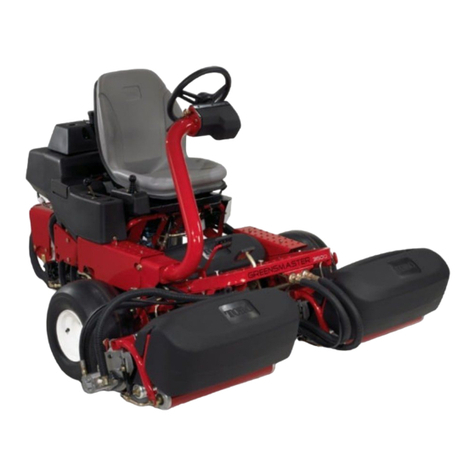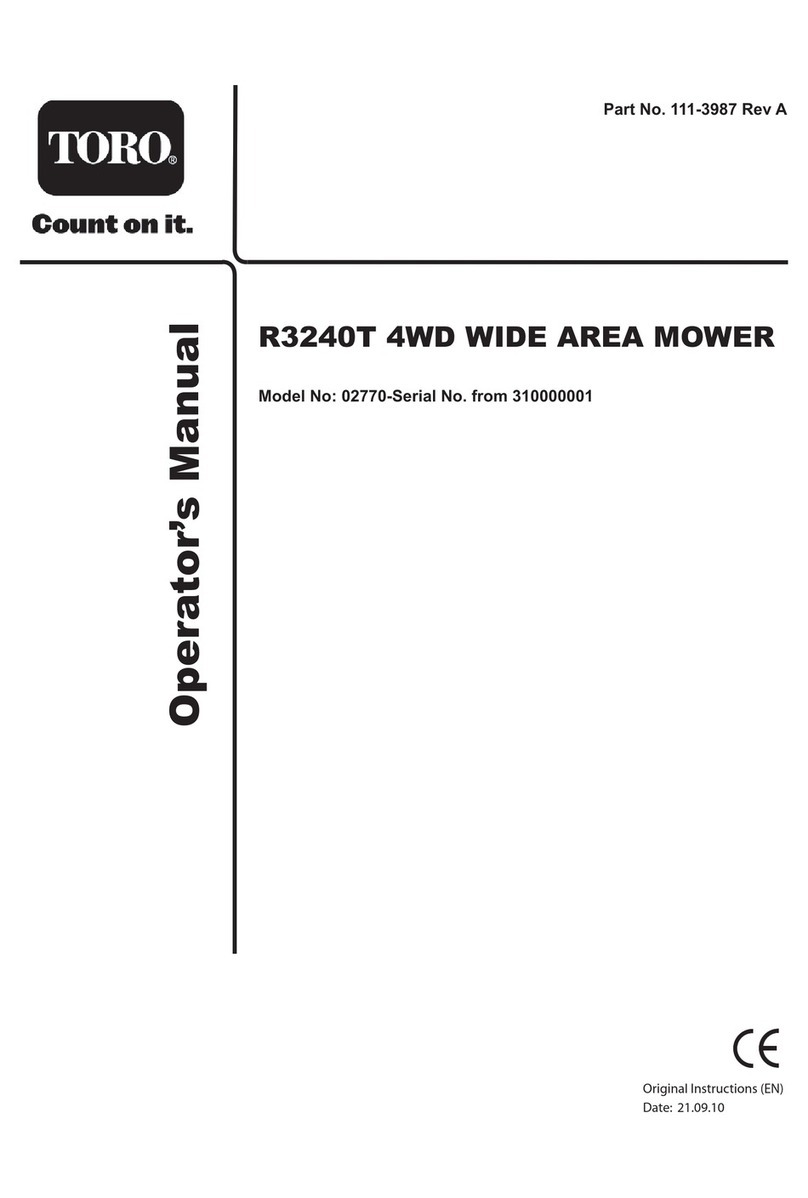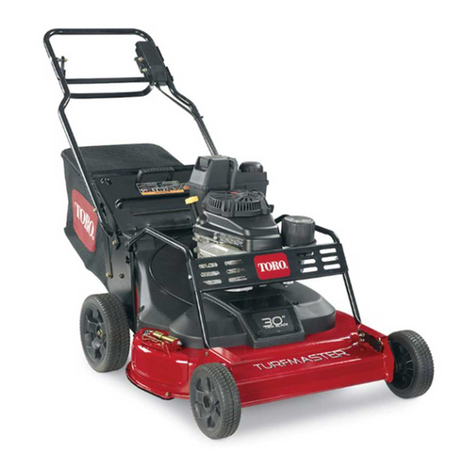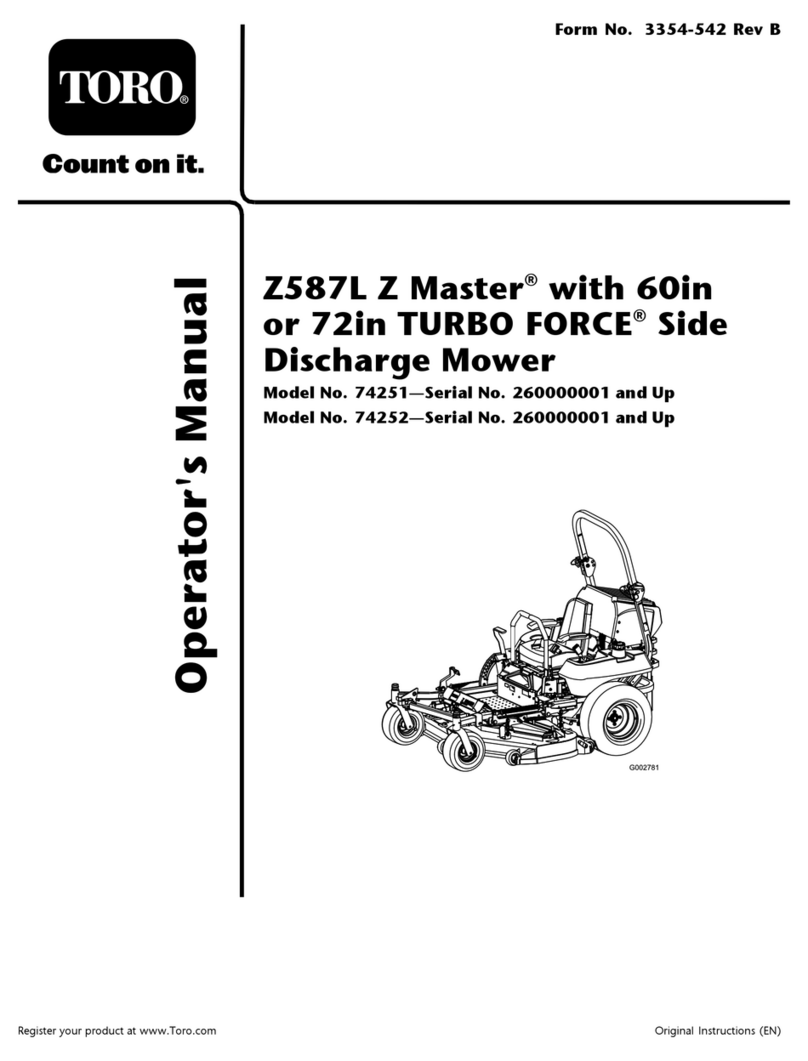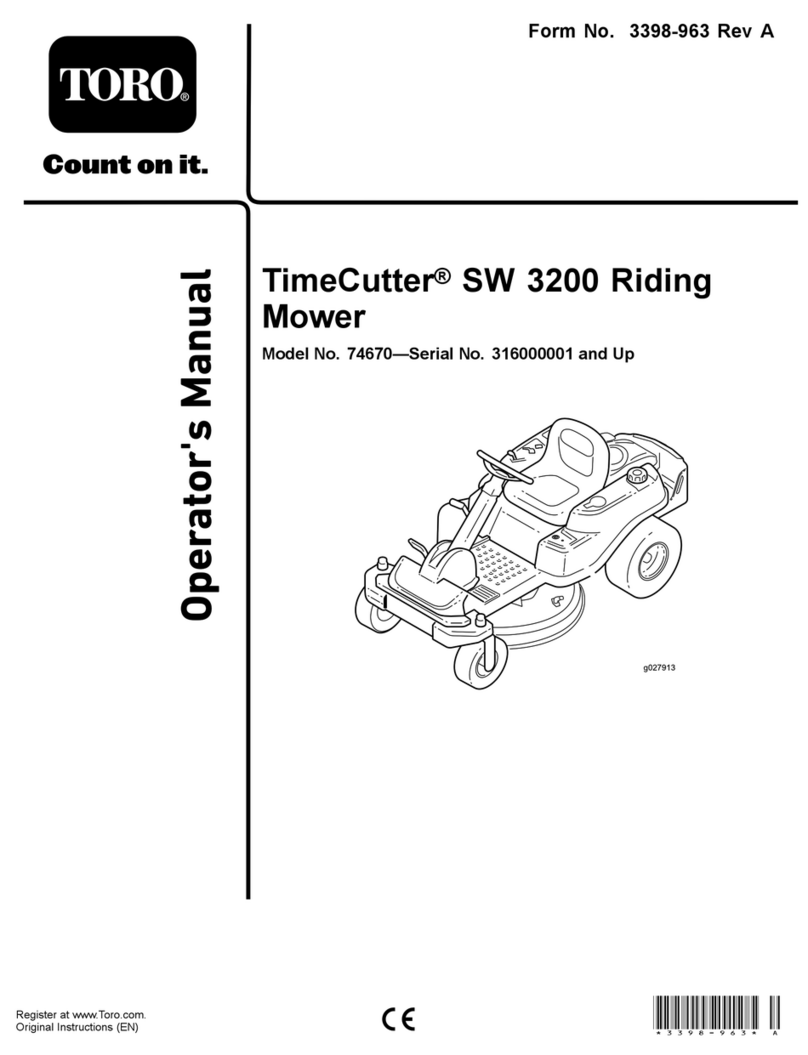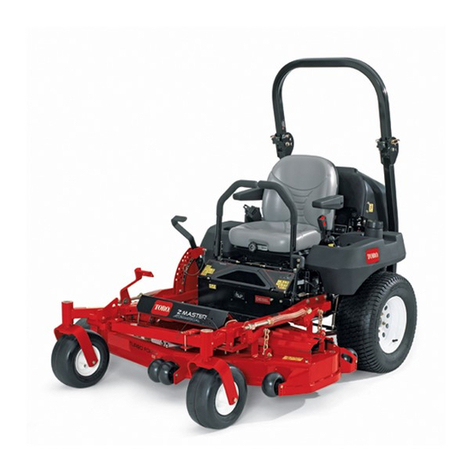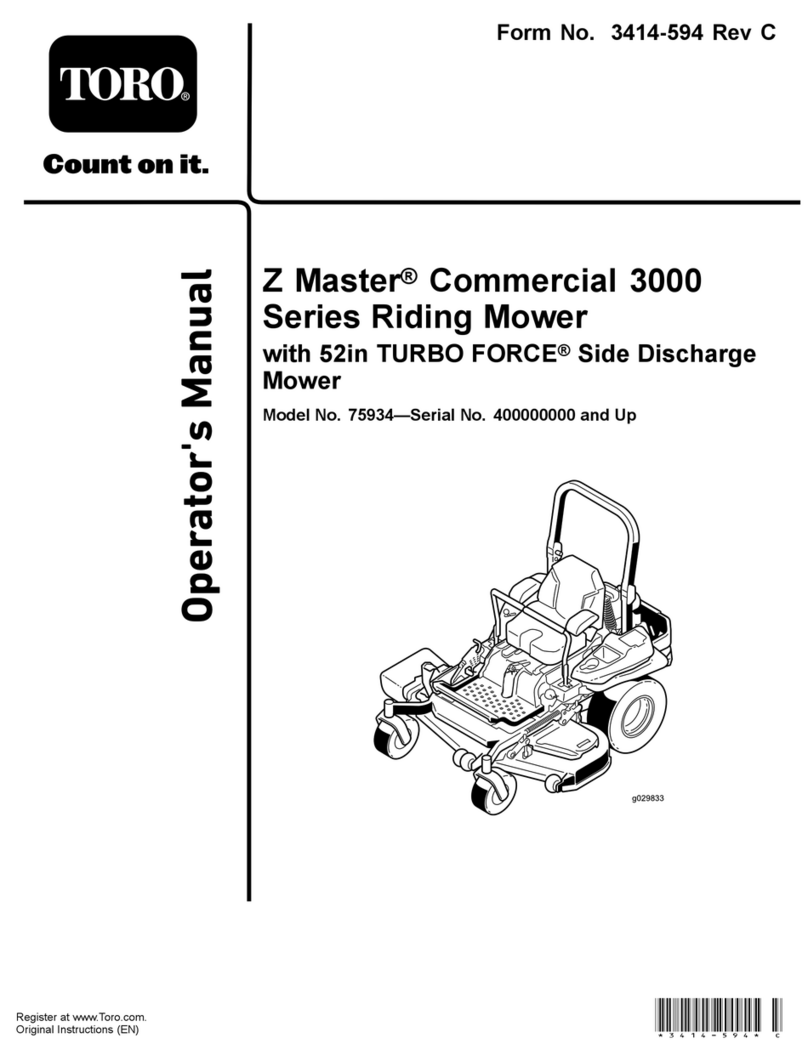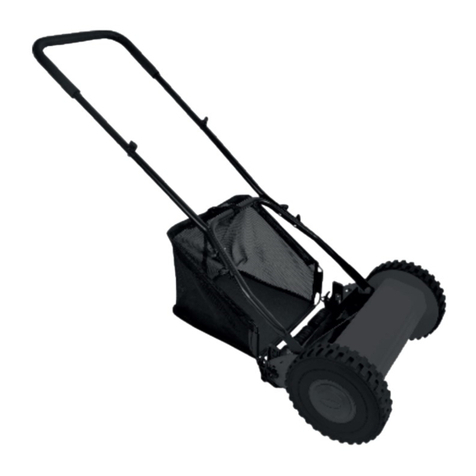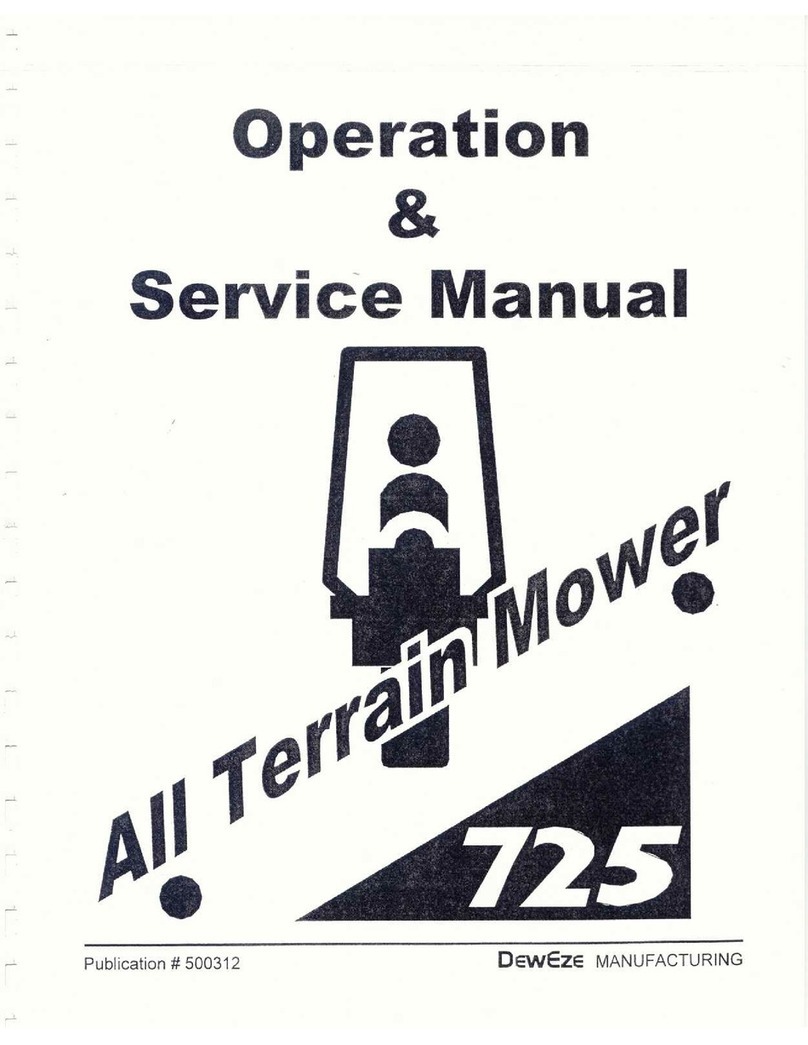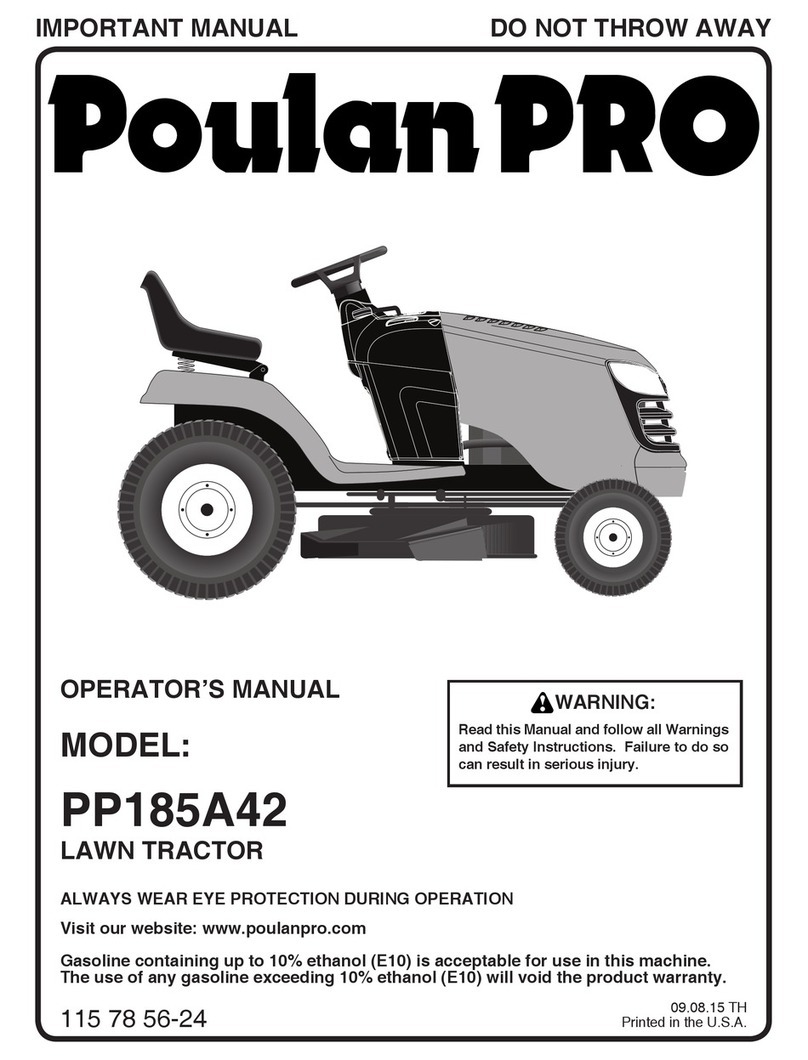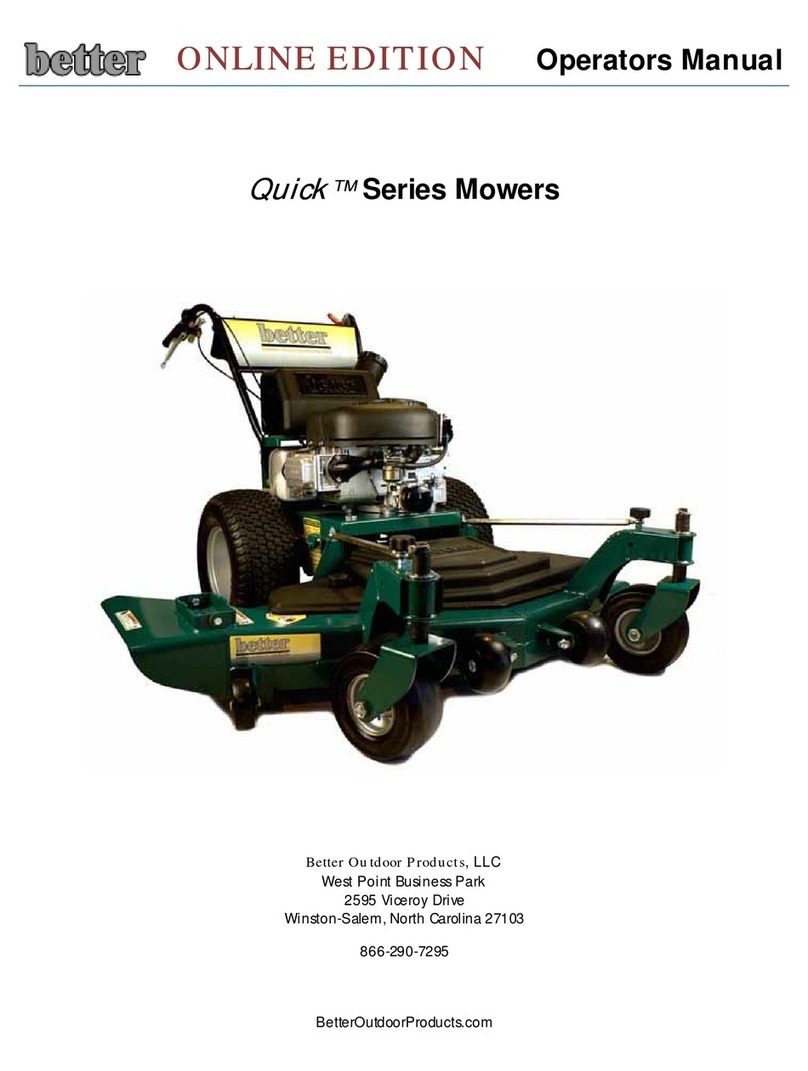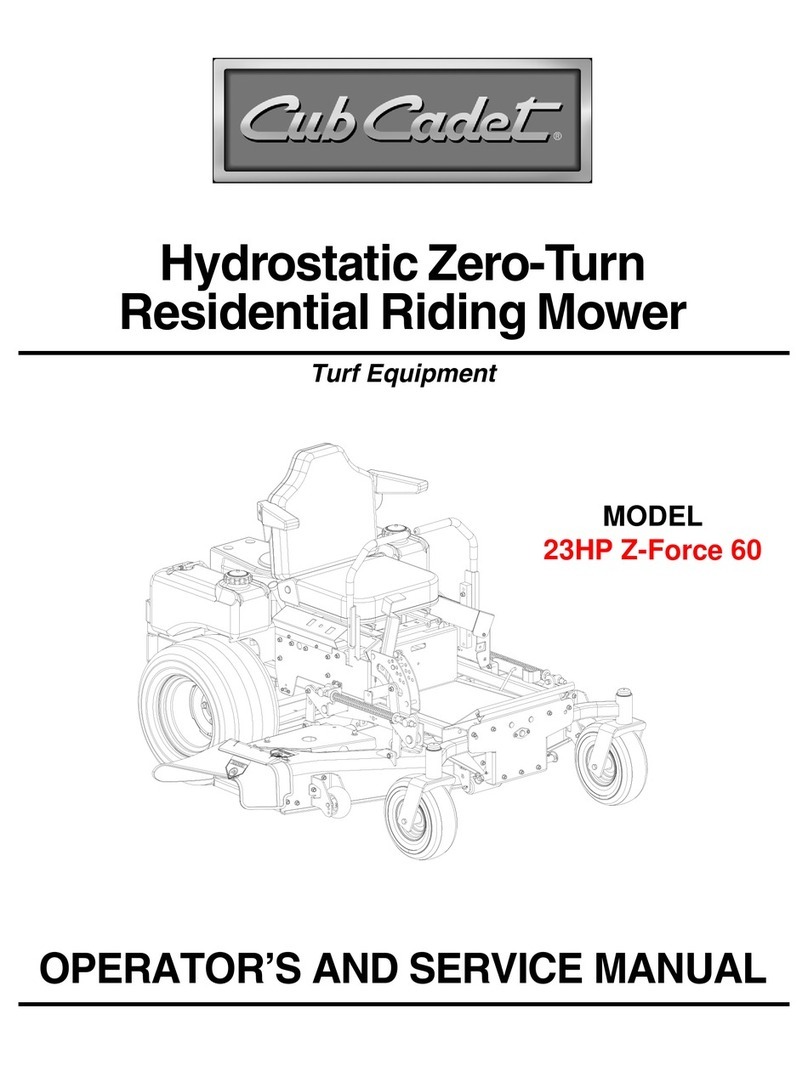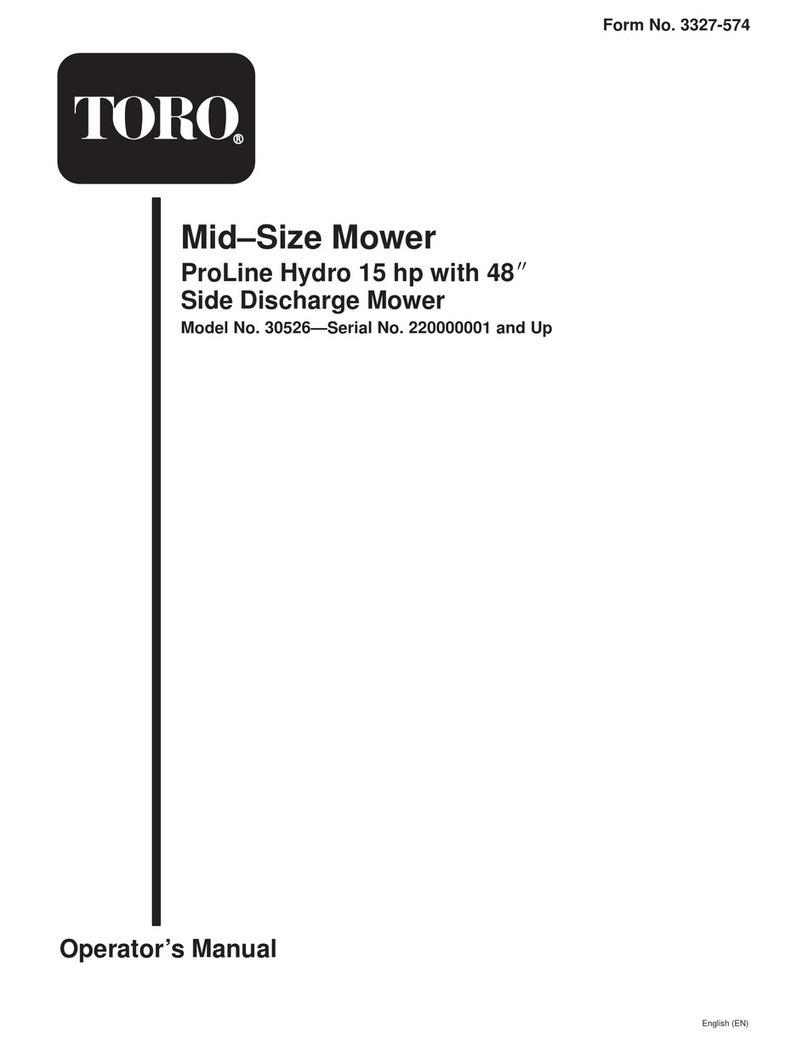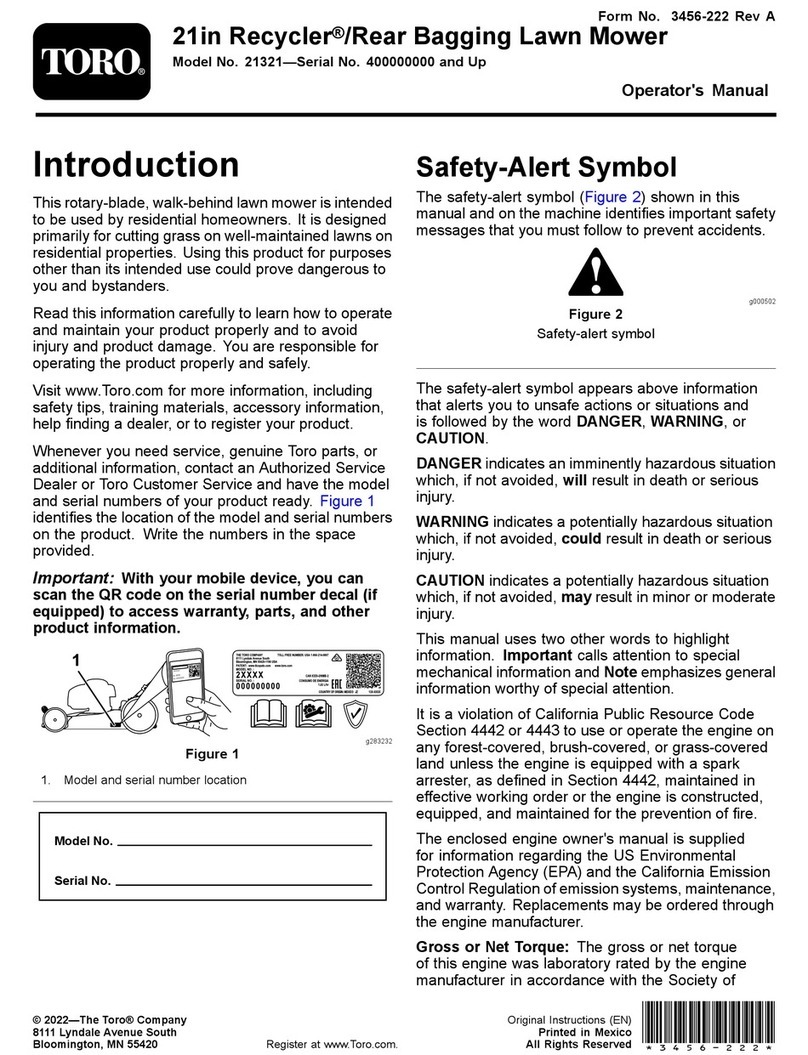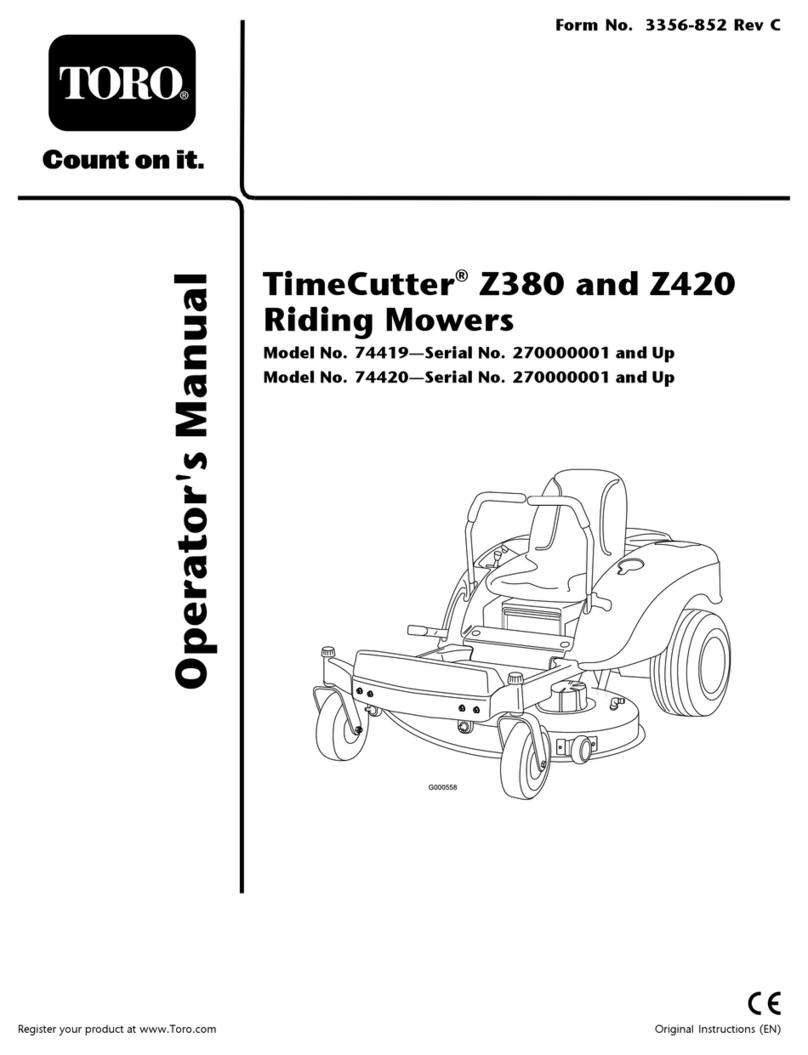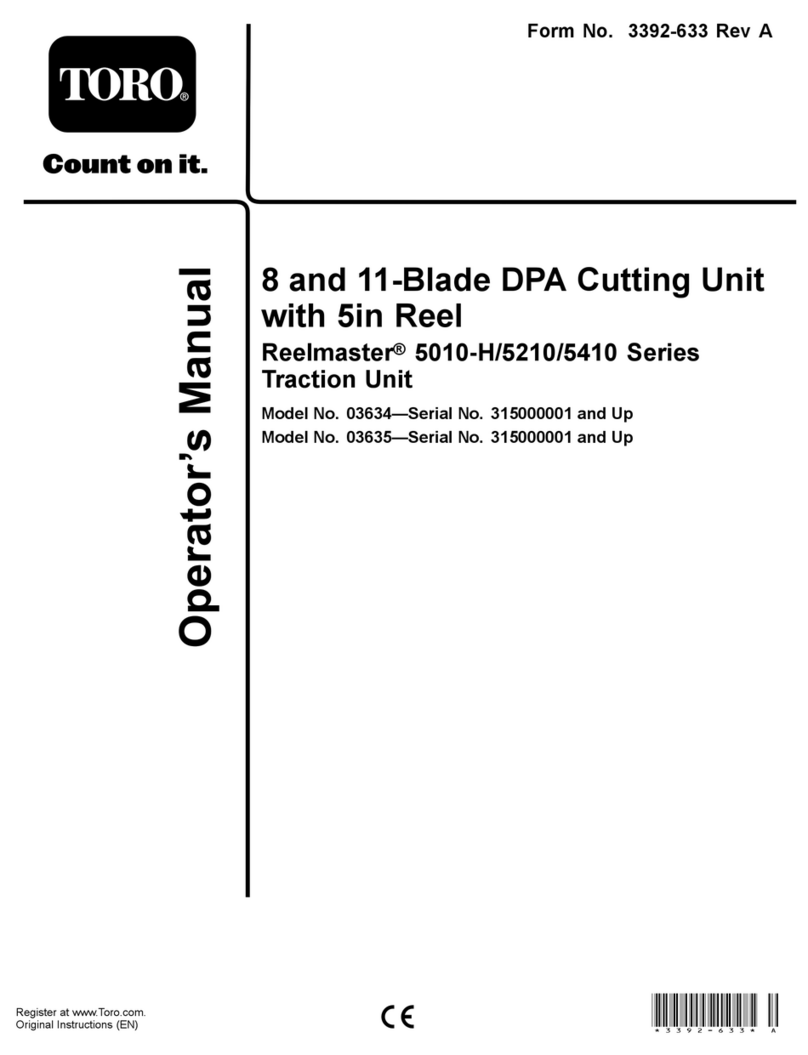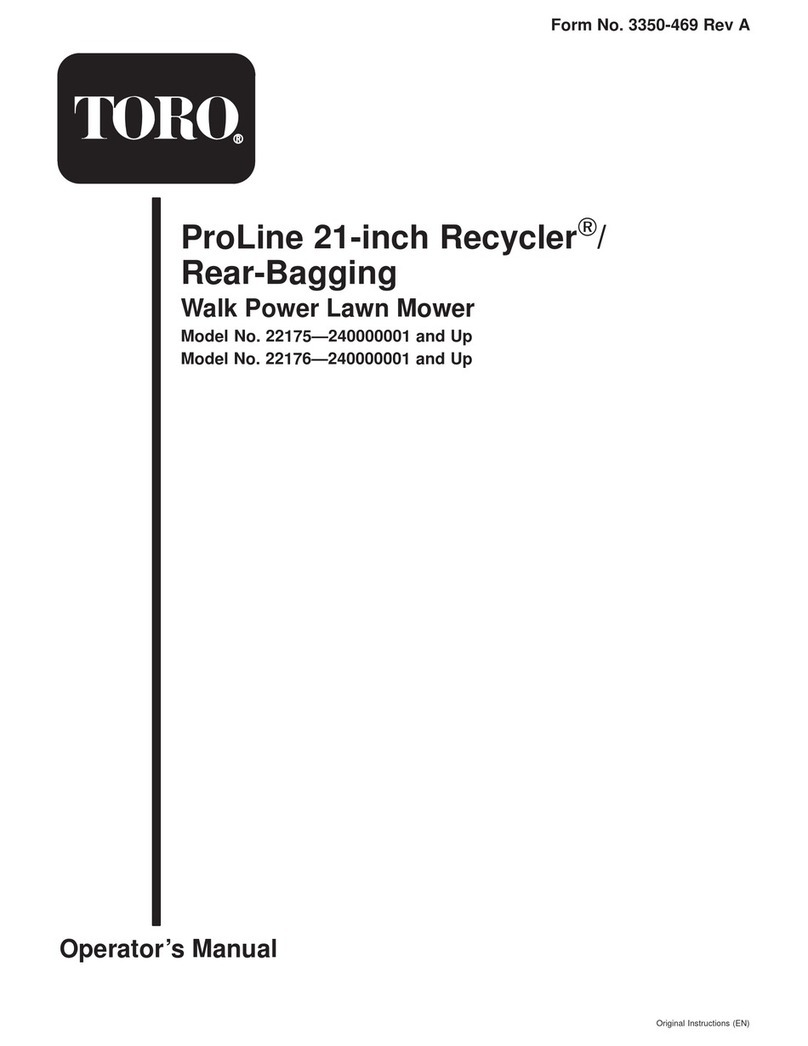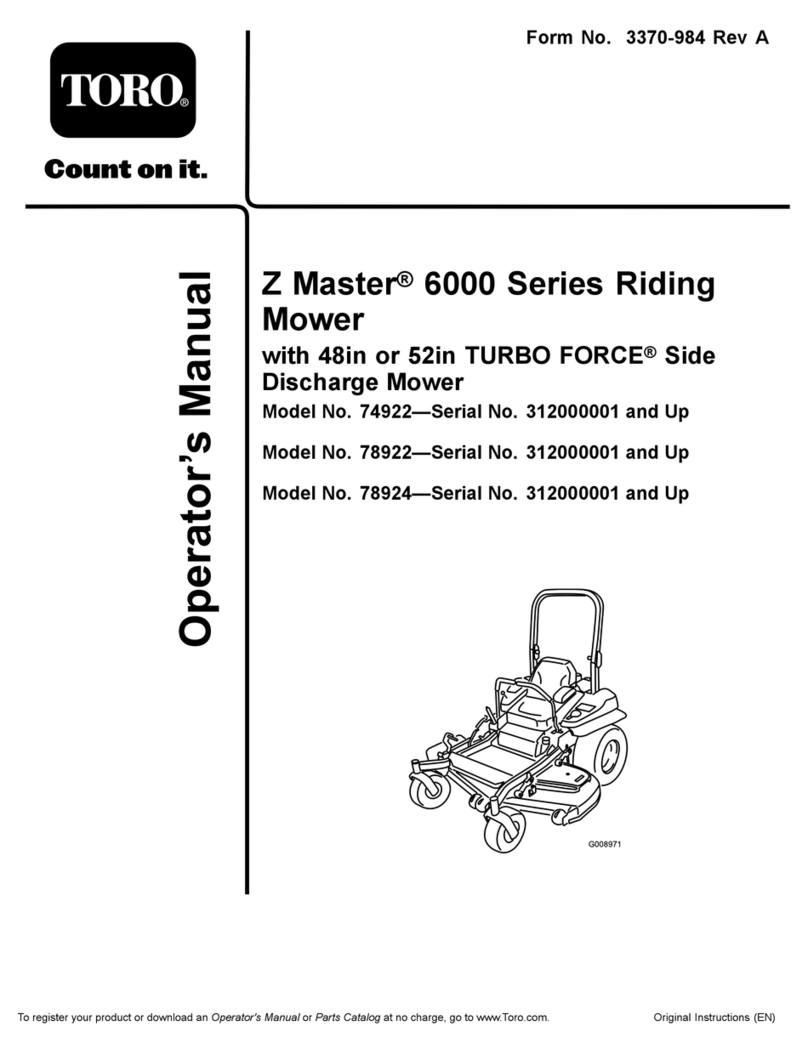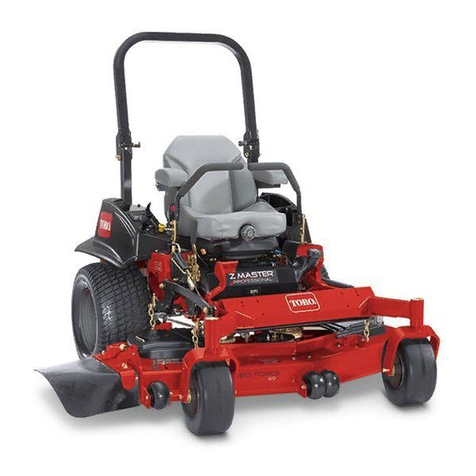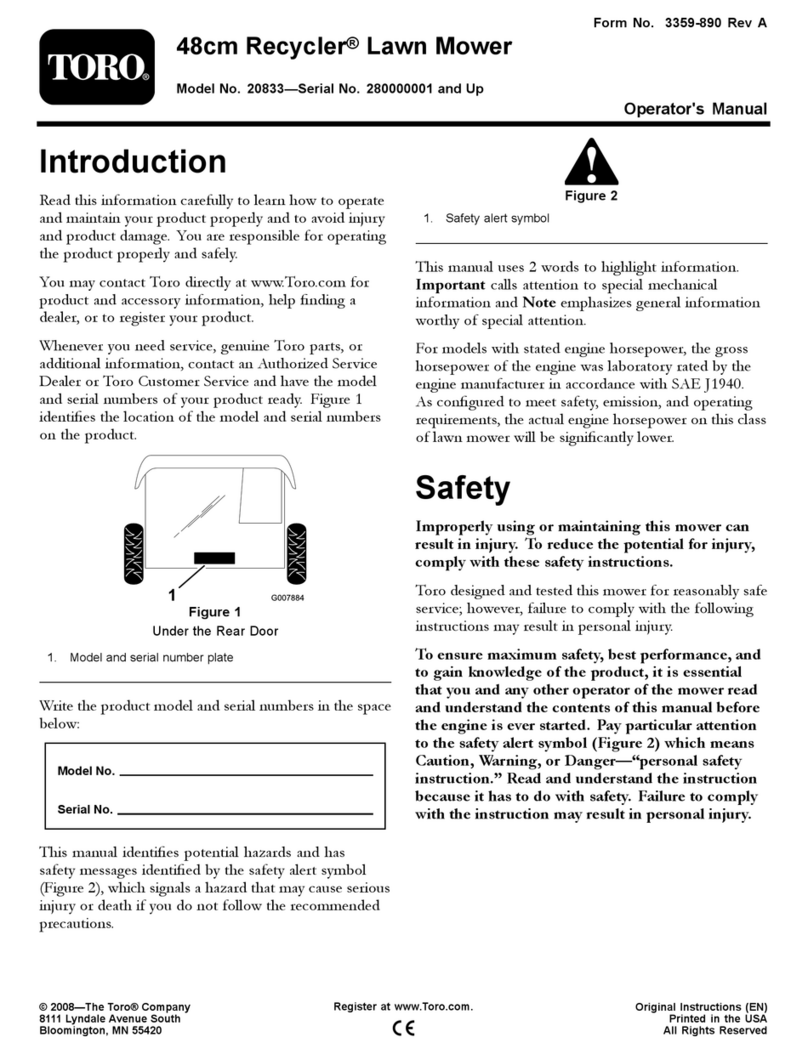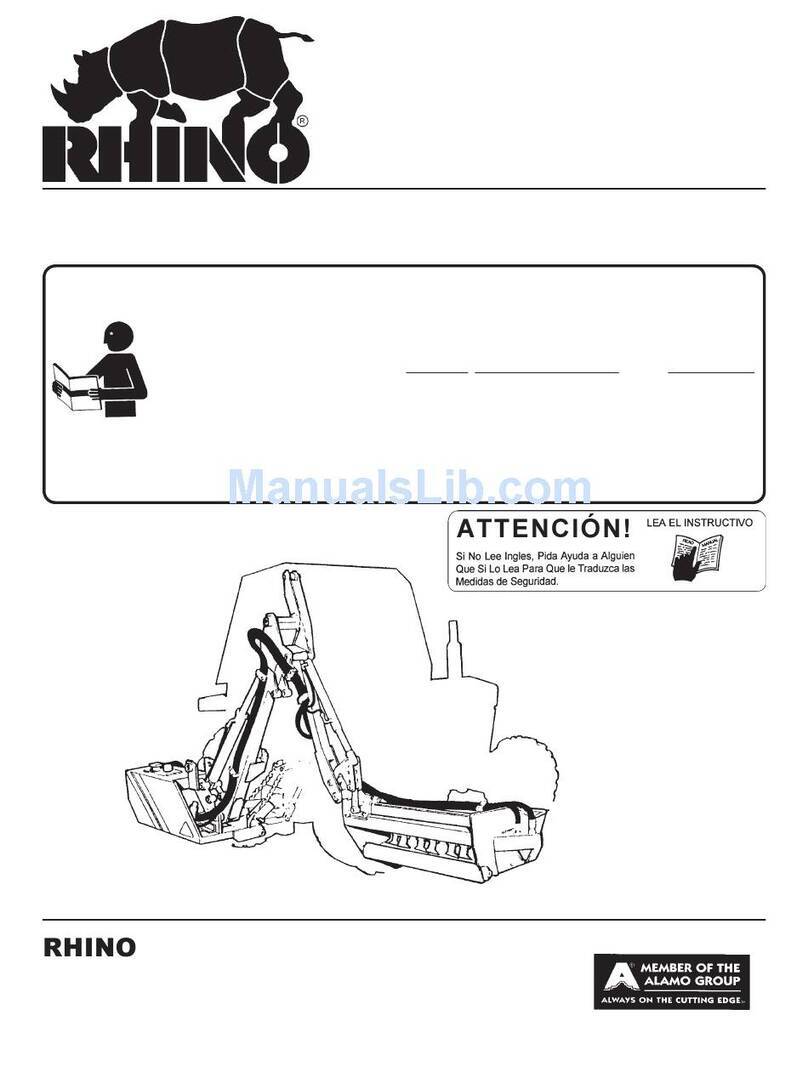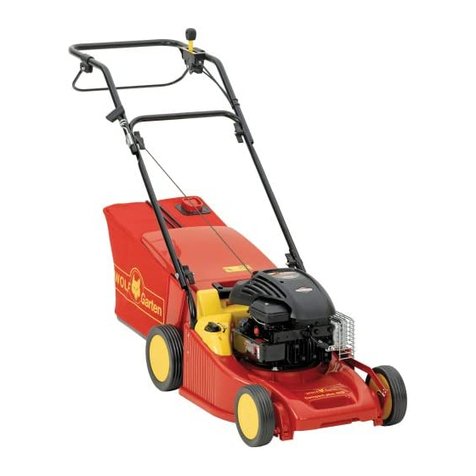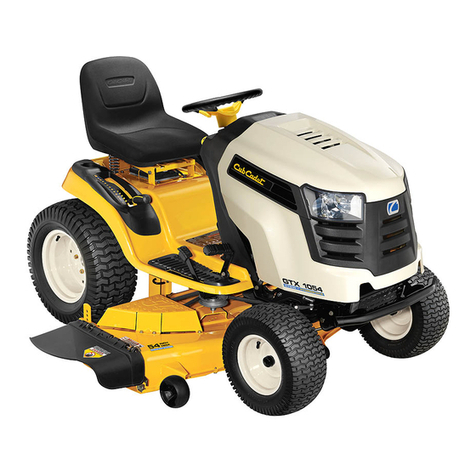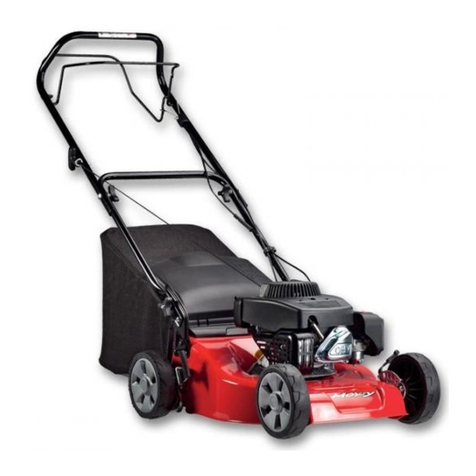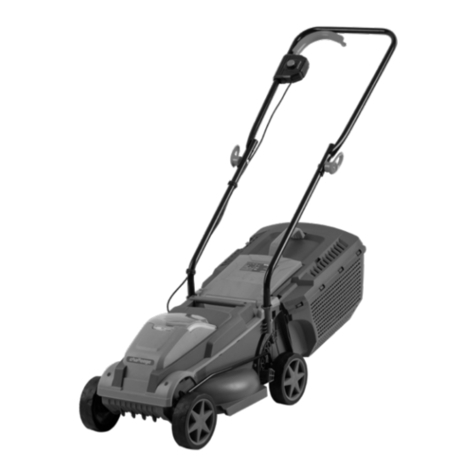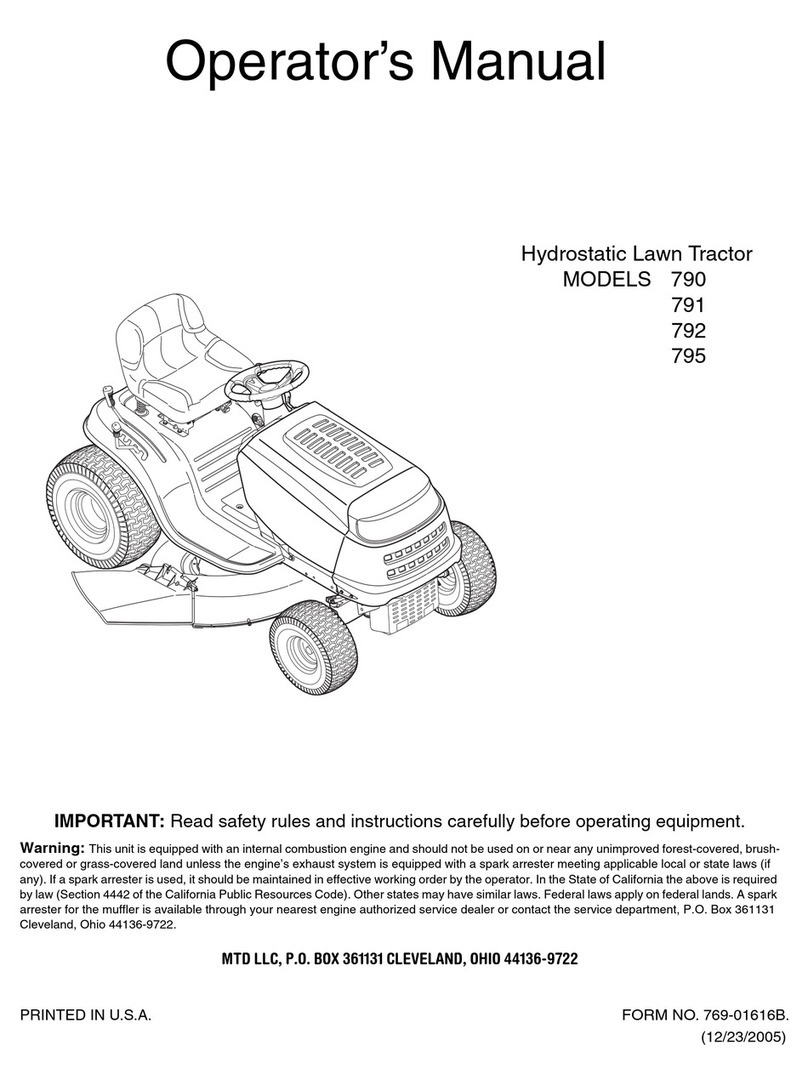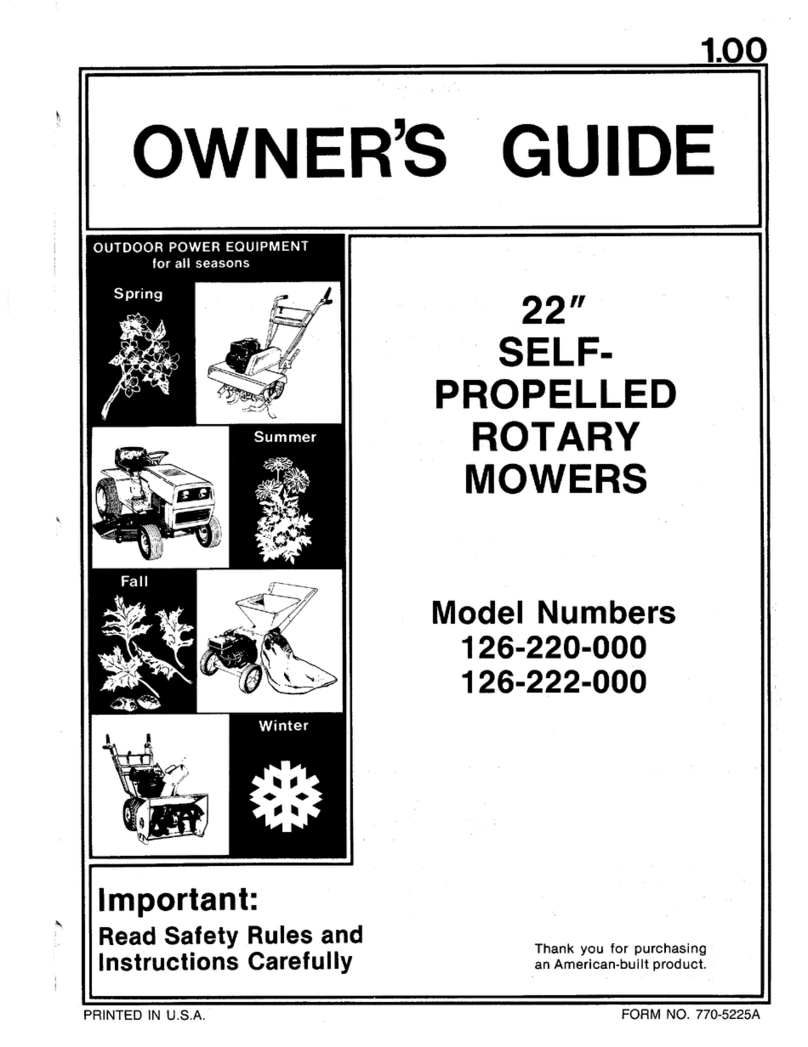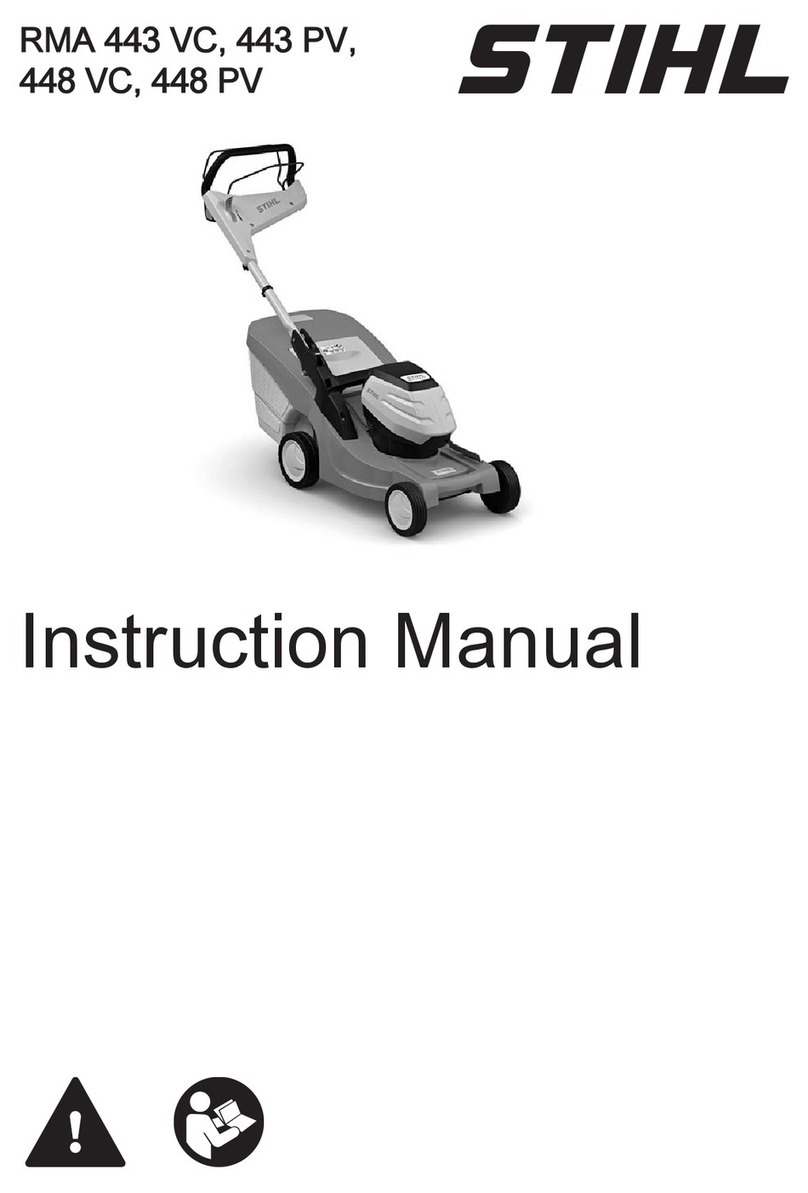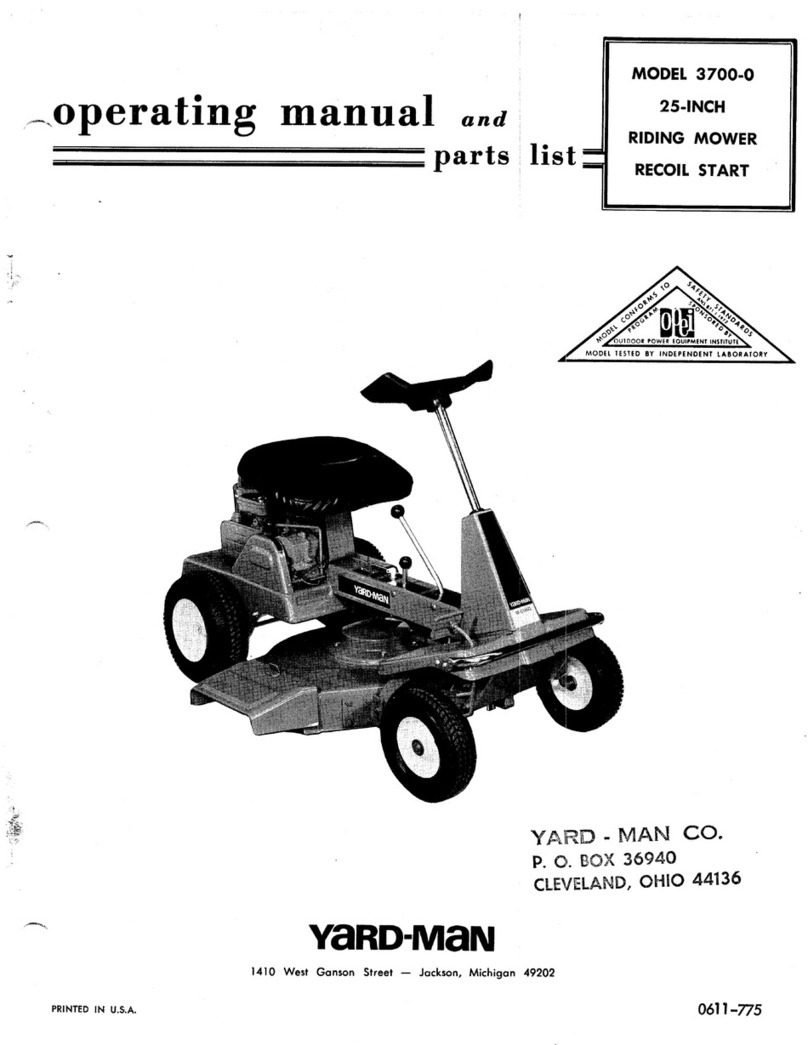
2
All Rights Reserved
Printed in the USA
2001 by The Toro Company
8111 Lyndale Avenue South
Bloomington, MN 55420-1196
The engine exhaust from this product contains
chemicals known to the State of California to cause
cancer, birth defects, or other reproductive harm.
Warning
Important The engine in this product is not equipped
with a spark arrester muffler. It is a violation of California
Public Resource Code Section 4442 to use or operate this
engine on any forest-covered, brush-covered, or
grass-covered land as defined in CPRC 4126. Other states
or federal areas may have similar laws.
This spark ignition system complies with Canadian
ICES-002.
Ce système d’allumage par étincelle de véhicule est
conforme à la norme NMB-002 du Canada.
The enclosed Engine Owner’s Manual is supplied for
information regarding the U.S. Environmental
Protection Agency (EPA) and the California Emission
Control Regulation of emission systems, maintenance,
and warranty.
Keep this Engine Owner’s Manual with your unit.
Should this Engine Owner’s Manual become damaged
or illegible, replace immediately. Replacements may be
ordered through the engine manufacturer.
Contents
Page
Introduction 3. . . . . . . . . . . . . . . . . . . . . . . . . . . . . . . . .
Safety 3. . . . . . . . . . . . . . . . . . . . . . . . . . . . . . . . . . . . . .
Safe Operating Practices 3. . . . . . . . . . . . . . . . . . . .
Toro Mower Safety 5. . . . . . . . . . . . . . . . . . . . . . . .
Slope Chart 7. . . . . . . . . . . . . . . . . . . . . . . . . . . . . . .
Safety and Instruction Decals 9. . . . . . . . . . . . . . . . .
Gasoline and Oil 12. . . . . . . . . . . . . . . . . . . . . . . . . . . . .
Recommended Gasoline 12. . . . . . . . . . . . . . . . . . . . .
Using Stabilizer/Conditioner 12. . . . . . . . . . . . . . . . .
Filling the Fuel Tank 12. . . . . . . . . . . . . . . . . . . . . . .
Check Engine Oil Level 12. . . . . . . . . . . . . . . . . . . . .
Setup 13. . . . . . . . . . . . . . . . . . . . . . . . . . . . . . . . . . . . . .
Loose Parts 13. . . . . . . . . . . . . . . . . . . . . . . . . . . . . . .
Removing the bracket from Rear Tail Wheel 13. . . .
Removing the Deck Banding 13. . . . . . . . . . . . . . . . .
Checking the Tire Pressure 13. . . . . . . . . . . . . . . . . .
Activating the Battery 13. . . . . . . . . . . . . . . . . . . . . .
Removing the Machine from Crate 14. . . . . . . . . . . .
Checking the Hydraulic Fluid 14. . . . . . . . . . . . . . . .
Check Engine Oil Level 14. . . . . . . . . . . . . . . . . . . . .
Operation 14. . . . . . . . . . . . . . . . . . . . . . . . . . . . . . . . . . .
Page
Think Safety First 14. . . . . . . . . . . . . . . . . . . . . . . . . .
Controls 14. . . . . . . . . . . . . . . . . . . . . . . . . . . . . . . . .
Operating the Parking Brake 15. . . . . . . . . . . . . . . . .
Starting and Stopping the Engine 15. . . . . . . . . . . . . .
Operating the Power Take Off (PTO) 16. . . . . . . . . .
The Safety Interlock System 16. . . . . . . . . . . . . . . . .
Driving Forward or Backward 17. . . . . . . . . . . . . . . .
Stopping the Machine 18. . . . . . . . . . . . . . . . . . . . . .
Positioning the Seat 18. . . . . . . . . . . . . . . . . . . . . . . .
Adjusting the Height-of-Cut 18. . . . . . . . . . . . . . . . .
Tilting the Mower 18. . . . . . . . . . . . . . . . . . . . . . . . . .
Dumping the Hopper 19. . . . . . . . . . . . . . . . . . . . . . .
Pushing the Machine by Hand 20. . . . . . . . . . . . . . . .
Removing the Deck and Carrier Frame 20. . . . . . . . .
Installing Deck and Carrier Frame 22. . . . . . . . . . . . .
Install the Mulching Baffle 24. . . . . . . . . . . . . . . . . .
Operating with Mulching Baffle 24. . . . . . . . . . . . . .
Installing the Bagger and Discharge Baffles 25. . . . .
Operating with Bagger 25. . . . . . . . . . . . . . . . . . . . . .
Installing and Removing the Plenum 26. . . . . . . . . . .
Maintenance 27. . . . . . . . . . . . . . . . . . . . . . . . . . . . . . . . .
Recommended Maintenance Schedule 27. . . . . . . . .
Servicing the Cutting Blades 28. . . . . . . . . . . . . . . . .
Correcting Cutting Unit Mismatch 30. . . . . . . . . . . .
Matching the Height–of–Cut 30. . . . . . . . . . . . . . . . .
Checking the Front-to-Rear Pitch 30. . . . . . . . . . . . .
Changing the Front-to-Rear Pitch 31. . . . . . . . . . . . .
Checking the Side-to-Side Level 31. . . . . . . . . . . . . .
Change the Side-to-Side Level 31. . . . . . . . . . . . . . .
Servicing the Air Cleaner 31. . . . . . . . . . . . . . . . . . . .
Servicing the Engine Oil 33. . . . . . . . . . . . . . . . . . . .
Servicing the Spark Plugs 34. . . . . . . . . . . . . . . . . . .
Servicing the Fuel Filter 35. . . . . . . . . . . . . . . . . . . . .
Servicing the Fuel Tank 36. . . . . . . . . . . . . . . . . . . . .
Cleaning the Cooling Systems 36. . . . . . . . . . . . . . . .
Greasing and Lubricating 37. . . . . . . . . . . . . . . . . . . .
Servicing the Gearbox Fluid 38. . . . . . . . . . . . . . . . .
Changing the Gearbox Fluid 38. . . . . . . . . . . . . . . . .
Checking the Gearbox Fluid 39. . . . . . . . . . . . . . . . .
Replacing the Castor Wheel Fork Bushings 39. . . . .
Replacing Idler Arm Bushings 40. . . . . . . . . . . . . . . .
Replacing Push Arm Bushings 41. . . . . . . . . . . . . . . .
Servicing the Castor Wheels and
Tail Wheel Bearings 41. . . . . . . . . . . . . . . . . . . . . .
Checking the Tire Pressure 42. . . . . . . . . . . . . . . . . .
Servicing the Hydraulic System 42. . . . . . . . . . . . . . .
Adjusting the Motion Controls 44. . . . . . . . . . . . . . . .
Replacing the Power Take Off (PTO) Belt 45. . . . . .
Replacing the Traction Belt 45. . . . . . . . . . . . . . . . . .

